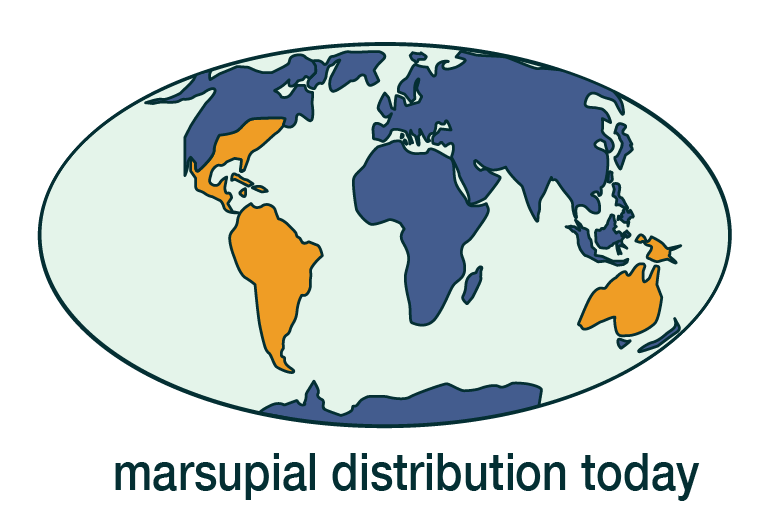The distribution of species on Earth provides evidence that informs our understanding of both the evolution of life and the movement of continents across the globe via plate tectonics.
 For example, marsupial mammals (those with pouches such as the koala and kangaroos) are found in the Americas as well as Australia and New Guinea (shown in brown on the map). The question is how did they end up in such distant locations and nowhere in between? They are not able to swim across the Pacific Ocean, nor have they been discovered wandering Asia or Africa; there appear to be no routes of migration between the Australian and American populations. How did marsupials get from their place of origin (in North America) to locations half a world away?
For example, marsupial mammals (those with pouches such as the koala and kangaroos) are found in the Americas as well as Australia and New Guinea (shown in brown on the map). The question is how did they end up in such distant locations and nowhere in between? They are not able to swim across the Pacific Ocean, nor have they been discovered wandering Asia or Africa; there appear to be no routes of migration between the Australian and American populations. How did marsupials get from their place of origin (in North America) to locations half a world away?
The fossil record and record of past continental positions provide the answer. Fossils of marsupials have been found in Antarctica as well as in South America and Australia. This and many other lines of evidence suggest that all the continents we know today were once part of a single landmass called Pangaea. This video shows Pangaea splitting apart 200 to 90 million years ago. Marsupials didn’t need a migration route from one part of the world to another; they rode the continents to their present positions and continued to diversify and move around on those separate continents. And then the fossil record shows that the North American opossum then migrated from South America more recently, perhaps as recently as one million years ago.
As with the other lines of evidence described here, our observations of the distribution of species on Earth today makes most sense if we understand that both life and Earth are very old and have changed over time.
Reviewed and updated, June 2020.
